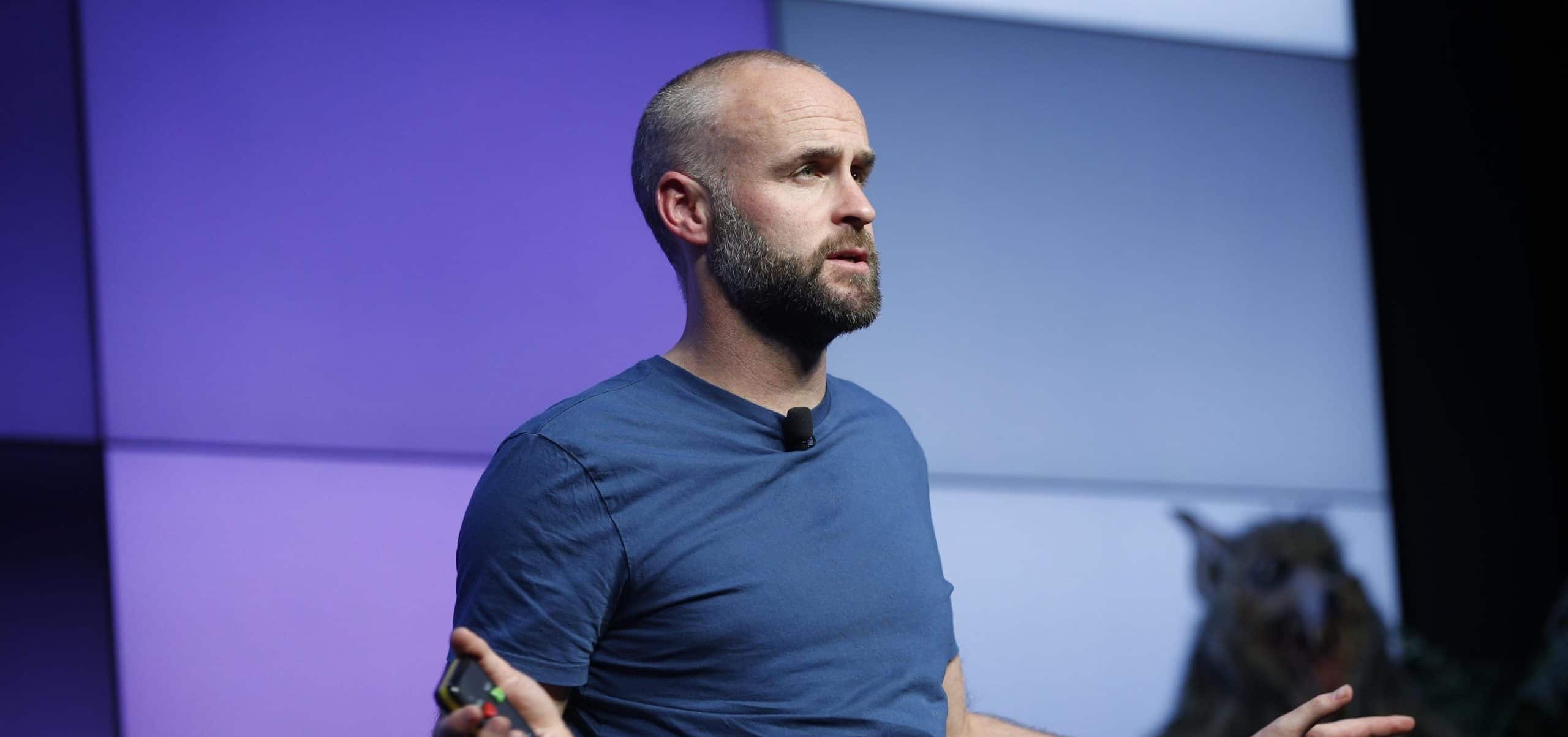Pictured: Alan Coleman, CEO, Wolfgang Digital
Wolfgang Digital have analysed 62 million website sessions and over €233 million in online revenue over the past weeks, to compile a report covering movements in the online economy during the Covid-19 crisis. Alan Coleman, CEO of Wolfgang Digital, discusses the findings.
We are analysing ongoing movements in e-commerce traffic and e-commerce revenue during the Covid-19 crisis.
The first 4 weeks of our report fell in February and were before the Covid-19 crisis took hold. These weeks form our “base” period. Our dataset contained over €9 million online revenue in the Retail and Travel sectors combined in February. The next 18 weeks are from March into June when the crisis escalated.
In this week’s report we are going to update you with monthly figures from February to June. Now that life has settled down somewhat we are going to publish the On The Money report monthly rather than weekly.
Retail
Pulitzer prize winning author Charles Duhigg states in his book ‘The Power of Habit’ that 40% of what we do every day is done on autopilot. It’s a force of habit. This matters to marketers, one of the reasons marketing exists is to exert an unconscious influence on the actions of the consumer. Every time a consumer hits the high street, reaches to a supermarket shelf or unlocks their phone, a brand is seeking to influence the habit.
Habits matter to marketers.
Charles also states the “the difference between who you are and who you want to be, is what you do.”
These powerful words illustrate habits matter to everybody.
In her 2009 study on habit formation, Dr Phillipa Lally found new habits take on average at least 66 days to stick. We are now more than 126 days into the Covid crisis. Our ways of working, communicating, entertaining ourselves and shopping have been dramatically altered throughout this period. We’ve been forced to engage in many new activities during this time. The billion dollar question for marketers around the world is “what new habits will stick?”.
In today’s On The Money post we are going to scrutinise cold hard commercial data to see how consumers shopping behaviour has changed since pre-lockdown paying particular attention to spending patterns since the shops re-opened in mid June.
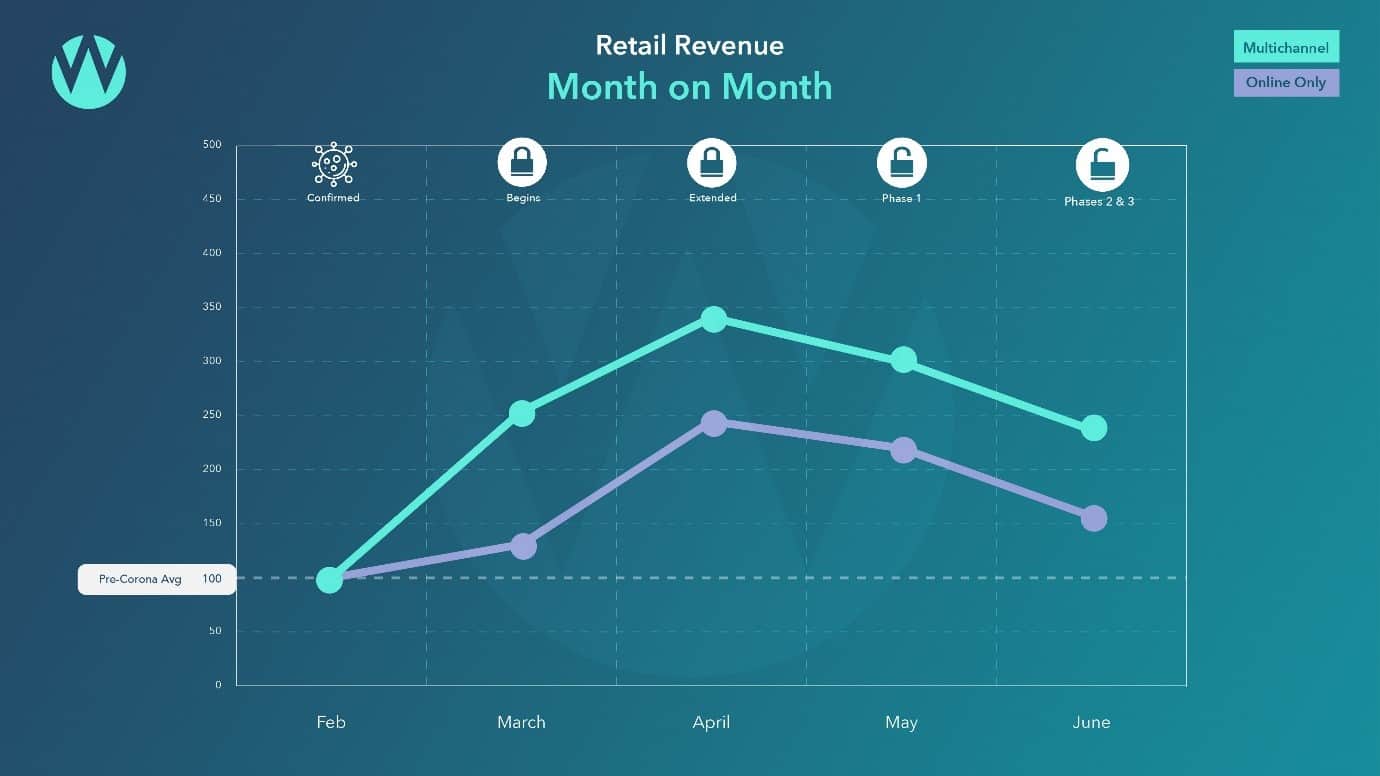
Looking across the 4 months we see online revenues have been more than double their pre-Covid average in every month during the crisis. Online revenues peaked in April at more than treble the pre-Covid levels.
June’s retail figure is still more than double the pre-Covid level at up 112%.
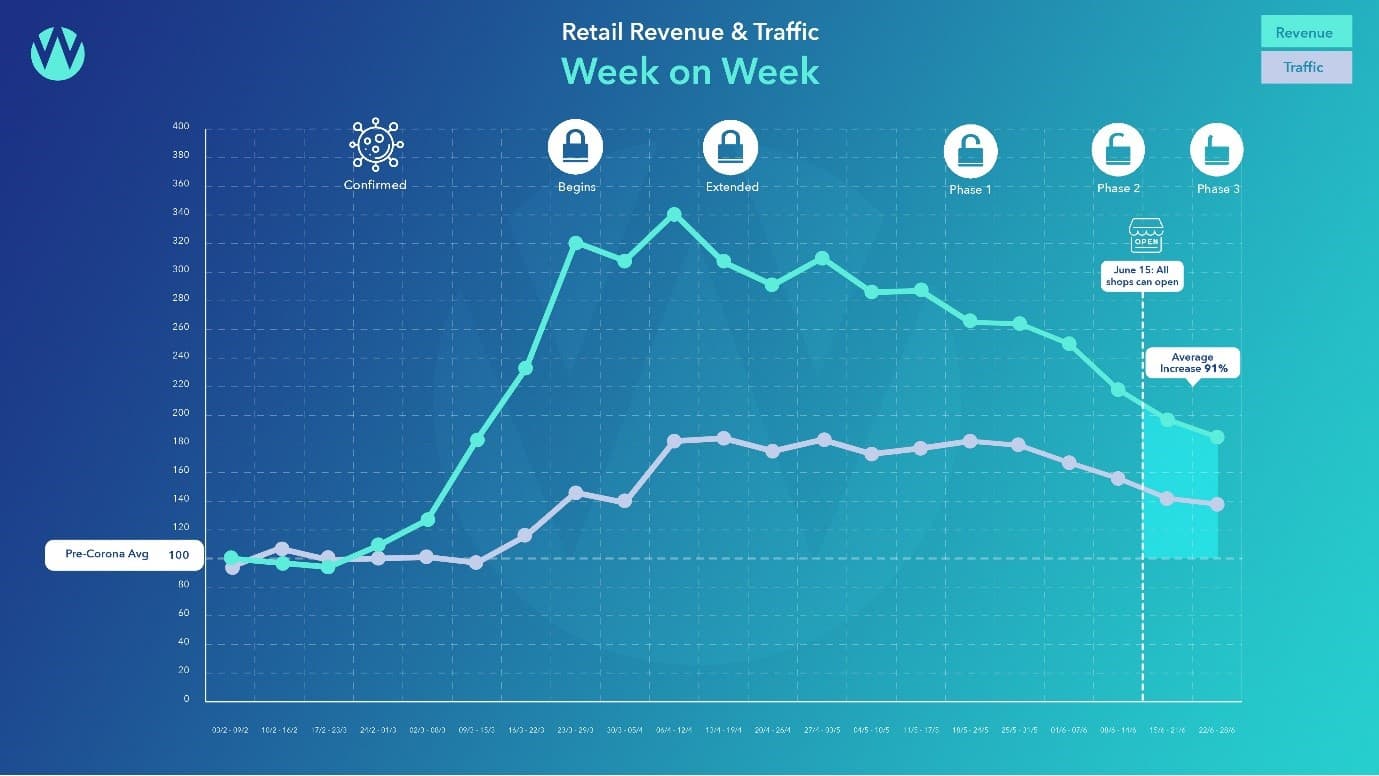
Shops started reopening on the 8th and 15th of June. If we focus on the period post June 15th where all shops can open, online revenues are still up a staggering 91% on pre-Covid levels.
To give this 91% figure context, Wolfgang’s recent annual online economy studies 2016, 2017 & 2018 (unpublished) have shown an average of 21% revenue growth per annum for e-commerce retailers.
Retailers have experienced 4 years online revenue growth in 4 months!
Covid has propelled the Irish online economy into 2024.
The consequence of this surge is that the online shop has become the flagship store. Many multichannel retailers are now seeing more revenue pass through their virtual till than through any of their high street tills.
This is the second shift in retailers’ understanding of their website’s value in quick succession. The website was once seen as “just another store”. The first shift was as a result of new reporting. The recent advent of research online purchase offline (ROPO) reporting from digital media duopoly Google and Facebook meant retailers had visibility on the large portion of in store sales that started with a website visit. As a result they began to view their website not as a “competitor” to their stores, but as the “gateway” to their stores. The second shift is as a result of the pandemic. As a result of Covid-induced lockdown retailers are now seeing their website as their number one driver of revenue, as well as the gateway to all their other stores. The website has become the flagship store.
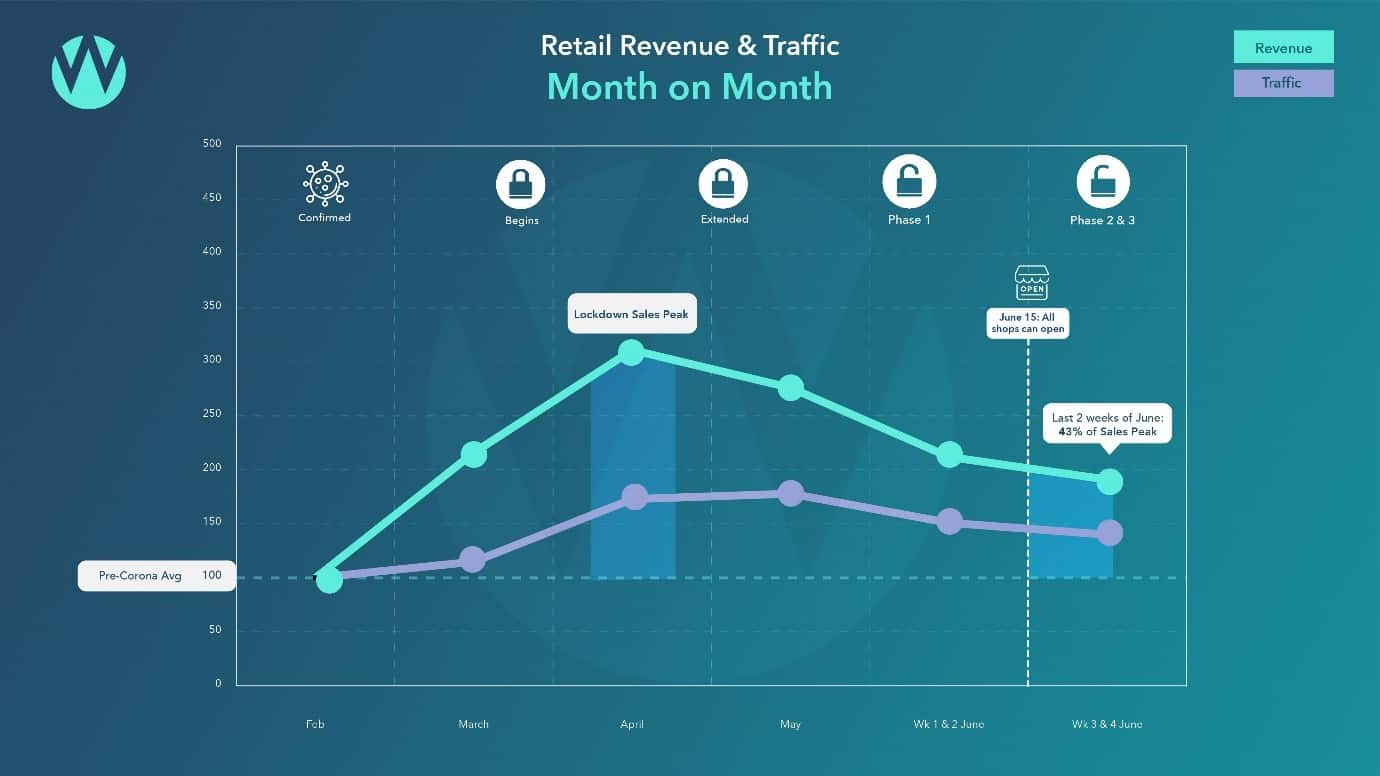
Another question on business people’s minds is what proportion of the peak revenue will remain online? Remember Charles Duhigg’s statement about 40% of your day is conducted on autopilot? In a curious parallel, 43% of the increased spend at peak lockdown in April is still being spent online with shops open. For almost half of that new shopping activity, the power of habit has been established.
An illuminating example of changing habits is provided by Tesco. Tesco prioritised over 65s with their home delivery service. Pre-Covid, 3% of their deliveries went to over 65s. That figure has quadrupled to 14% of deliveries now going to over 65s. Many of these new online shoppers wouldn’t have intended to shop online before, given the convenience of home delivery, they may rarely step foot in store again.
Customer Director Cathal Deavy had this to say:
“The brand purpose of Tesco is to “serve Ireland’s shoppers a little better every day”, and with Covid-19 after ensuring customer and colleague safety in-store; we decided to serve the most vulnerable customers as best we could; and online shopping was an ideal way to do that. Asking people not to shop with us online was unusual but the result of being able to support nearly 10,000 more customers over the age of 65 ultimately made it worthwhile”.
So what can retailers do to transform that peak lockdown website traffic and revenue into habitual shoppers?
Charles Duhigg describes a neurological loop at the core of every habit.
- Cue
- Routine
- Reward
The sweet spots for changing habits are at cue and reward. From an advertising perspective there are smart things retailers can do to trigger a cue in an audience. All those extra site visitors and new customers are a valuable business asset. They can be used as audiences in both Facebook and Google. This means the next time one of your once off customers from lockdown goes to Google to search for a product you offer, or even to search for the brand of a competitor, with some sophisticated audience strategies you could be front and centre on the Google SERP encouraging them to come back and buy a second time, a third, and a fourth, consolidating their habit of shopping with your brand. You can reach these prospects in a similar fashion on Facebook, Instagram and YouTube. Over the years at Wolfgang we’ve found audience based cross platform campaigns to be among the most high performing we’ve executed, half the awards on our wall have cross-channel audiences central to the strategy. Harness the power of audiences to create cues which transform your once off shoppers into habitual customers.
Travel
Travel continues to fester in the doldrums of decimated demand.
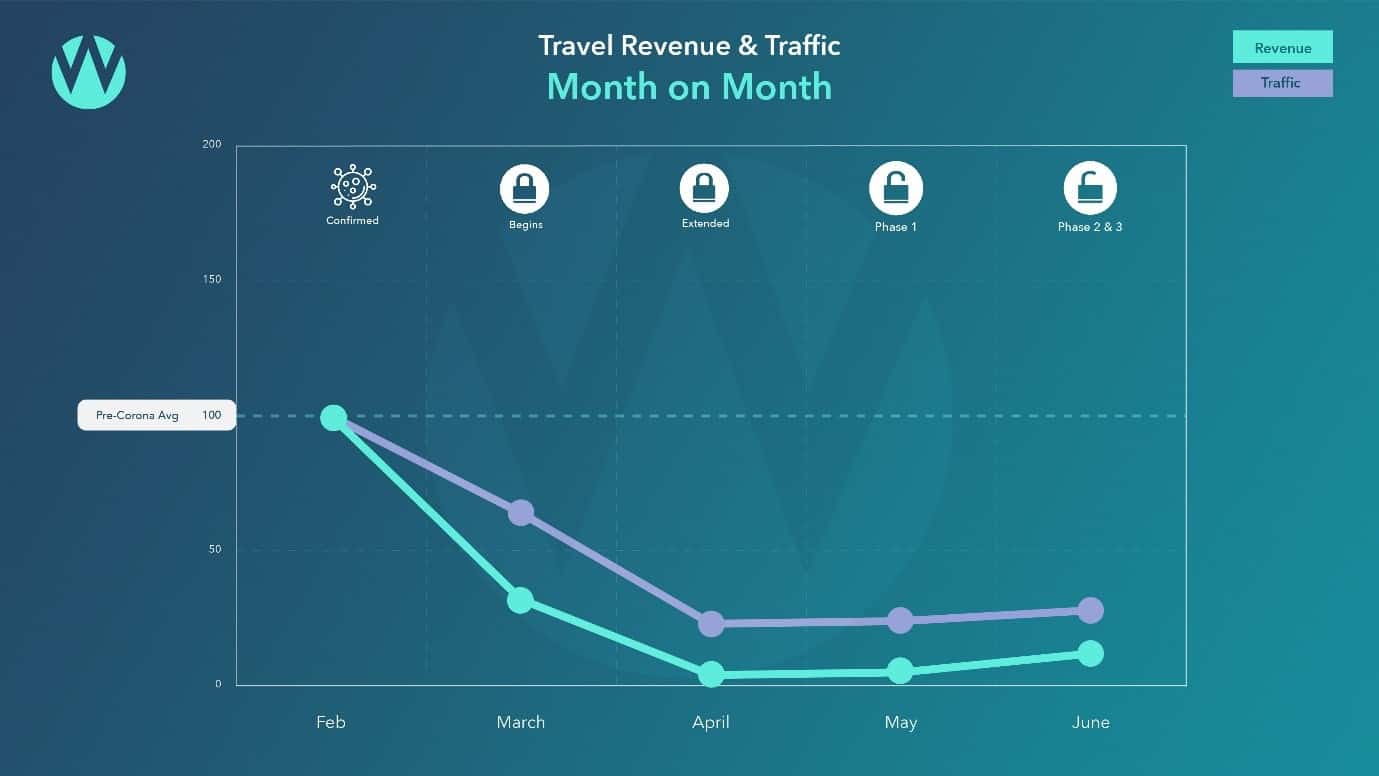
While revenue has been increasing since April’s low of 4% of the base figure, the current figure of 12% of base for June is depressing. We’d hoped for a spike in demand as people booked staycations from the 29th of June when the country opened up for domestic travel but this has not as yet been the case.
Consumers splashed the cash on home and garden items during the sunny lockdown. Given the medical advice not to travel internationally combined with the calls to shop local, many people are now planning on spending the summer holiday days in their gaff and spending their summer holiday budgets in their garden.
In casa Coleman we’ve switched up foreign holidays this year for a sauna in the garden. Sea swim, sauna and cider has become a revitalizing alternative.
About the data
The dataset is dynamic, after we publish figures, Google Analytics may continue to attribute revenue to previous weeks. In addition we might add and we might lose participants over time.This may lead to slight variances in the figures as time passes.
